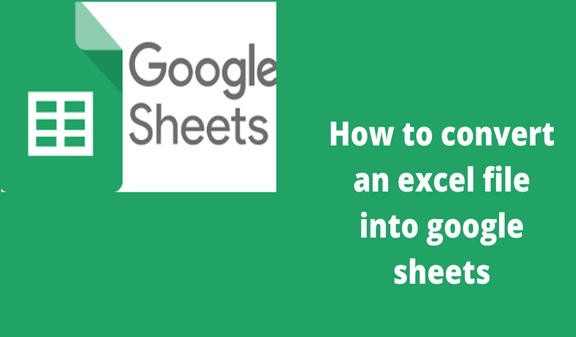Add Forecast Sheet in Excel 2010 Easily

Understanding Excel's Forecast Sheet Feature

Excel 2010 introduced a variety of powerful features for data analysis, and one of the standout additions was the Forecast Sheet tool. This tool simplifies the process of predicting future trends based on historical data, making it an essential feature for businesses, analysts, and anyone involved in forecasting. Before diving into the steps on how to use the Forecast Sheet in Excel 2010, let's explore why this tool is valuable: - Time-Saving: The Forecast Sheet automates the process of creating complex forecasting models, which traditionally would require significant manual work or advanced Excel knowledge. - Accuracy: By using statistical methods like linear regression, it provides forecasts with high reliability based on your dataset. - User-Friendly: Excel simplifies the forecasting process, making it accessible to users without deep statistical expertise.
Steps to Add a Forecast Sheet in Excel 2010

Let's go through the steps to create a Forecast Sheet in Excel 2010: 1. Prepare Your Data - Ensure your historical data is organized in a tabular format, with one column for time values (e.g., dates) and adjacent columns for the variable you want to forecast.
📊 Note: Make sure your data is complete and without gaps for the best forecasting results.
2. Select Your Data
- Click and drag to highlight the range of your data, including the headers. For example, select cells A1:B12 if your data spans from A1 to B12.
3. Access the Forecast Sheet Tool
- Navigate to the Data tab on the Ribbon.
- Click on the Forecast Sheet button found in the Forecast group.
4. Configuring Your Forecast
- A pane will open to the right side of your screen where you can adjust the settings:
- Forecast Start and Forecast End: Define the range for your forecast.
- Confidence Interval: Set this to show the uncertainty range around the forecast line.
- Seasonality: Excel can detect patterns in your data. You can choose to let Excel auto-detect or set it manually if known.
5. Generate the Forecast Sheet
- After setting your parameters, click Create.
- Excel will generate a new worksheet with:
- A time series plot showing historical data and forecasted values.
- A table with detailed statistical information and the forecasted values.
💡 Note: Ensure that your forecasted period doesn't exceed the amount of historical data you have. For example, if you have 12 months of historical data, forecast for no more than 12 months ahead.
6. Review and Customize
- Review the generated forecast for accuracy and consistency with your expectations or previous analysis.
- Customize the chart by clicking on any element, like the legend, axis labels, or the forecast line, to modify its appearance or settings.
Advanced Customization Options

For users with specific forecasting needs, here are some advanced features:
- Forecast Type: Change the forecasting method between linear or seasonal models.
- Chart Options: Choose from various chart styles or create your custom style.
- Confidence Interval: Adjust or hide the confidence interval based on your analytical requirements.
- Seasonality: Manually define seasonal patterns or adjust the auto-detected settings.
In-Depth Analysis
For further analysis:
- Model Fit: Check the R-squared value to assess how well the forecast model fits your data.
- Forecast Accuracy: Review statistical metrics like RMSE (Root Mean Square Error) for accuracy assessment.
- Residuals: Analyze residuals to check for any patterns that might indicate model inadequacies.
Understanding Limitations and Best Practices

When using the Excel 2010 Forecast Sheet tool:
- Data Quality: The accuracy of your forecast heavily relies on the quality and completeness of your historical data.
- Time Frame: The longer your historical data, the more reliable your forecasts will be. However, extending forecasts far into the future might reduce accuracy.
- Model Assumptions: Excel’s forecast tool assumes linearity or seasonality. Always consider if these assumptions fit your data.
Best Practices for Using the Forecast Sheet:
- Regular Updates: Keep your dataset updated to reflect the latest trends.
- Validation: Use historical data not used in the forecast creation to validate your model’s predictions.
- Documentation: Always document your assumptions, data sources, and the reasoning behind your forecasting choices.
Wrapping Up

The Forecast Sheet feature in Excel 2010 has transformed how we approach forecasting, making it more accessible and efficient. By following the steps outlined, users can quickly set up and analyze future trends without deep statistical knowledge, providing valuable insights for strategic planning or simple trend analysis. Remember to maintain high data quality, adhere to best practices, and critically evaluate your results for the best forecasting outcomes.
What is the difference between forecasting and predicting?

+
Forecasting generally involves analyzing historical data to predict future trends, focusing on quantitative methods. Prediction can be more qualitative or quantitative and might not always rely on historical data. In Excel, forecasting uses statistical methods to project future values.
How accurate is Excel’s Forecast Sheet?

+
The accuracy depends on multiple factors like data quality, model fit, and the nature of the forecasted variable. Excel uses statistical methods like linear regression, which can provide good results when assumptions are met, but no forecast is perfectly accurate.
Can I use non-time series data with the Forecast Sheet?

+
Excel’s Forecast Sheet is optimized for time series data. For non-time series data, you might need to use other analytical tools or manually apply forecasting techniques like regression analysis.
What should I do if my forecast doesn’t match my expectations?

+
Examine your data for completeness, check the assumptions of your model, and consider external factors not accounted for in your dataset. You might also need to refine your forecasting period or adjust the model type.



